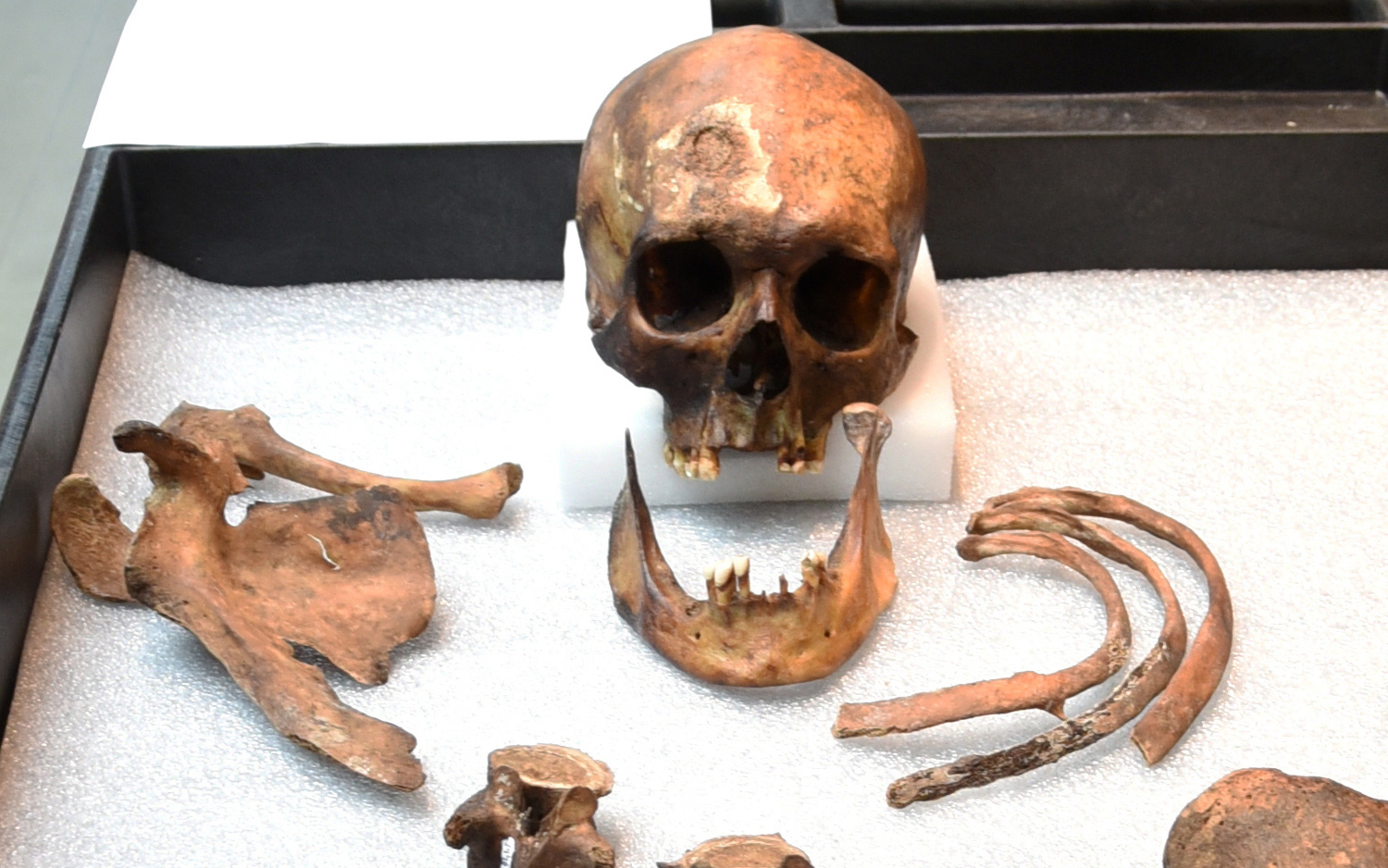Mysterious Connecticut 'Vampire' Finally Identified 200 Years After Burial

In a Connecticut graveyard dating to the late 18th century, one grave stood out. Its occupant, a man who died about 200 years ago, had been dug up and reburied with his head and limbs piled on top of his ribcage, hinting that he was suspected of being a vampire.
Now, archaeologists have revealed the identity of the man, formerly known only as "JB-55" — his initials and age when he died, which were spelled out on his coffin in embedded brass tacks, The Washington Post reported.
Forensic scientists compared genetic evidence from the skeleton with online genealogical databases to ID the "vampire" as a man named John Barber. He was probably a poor farmer who lived a hard life; he appears to have died from tuberculosis, a representative of the National Museum of Health and Medicine in Silver Spring, Maryland, announced at a museum event on July 26. [7 Strange Ways Humans Act Like Vampires]
The condition of Barber's skeleton suggested that he suffered from a poorly healed broken collarbone and an arthritic knee, according to The Post. The tuberculosis that killed him was so acute that it left lesions on his ribs, and his excruciating illness and death were likely what led his family and friends to suspect that he was a vampire, Jennifer Higginbotham, a DNA researcher with the U.S. Armed Forces Medical Examiner System, explained at the event.
Commonly known as consumption during the 18th and 19th centuries, tuberculosis caused ulcers in the lungs and left its victims pale, emaciated and weak. Infected people often had bloodstains at the corners of their mouths from coughing up blood, and their gums would recede, making their teeth appear longer, Higgenbotham explained.
Tuberculosis is highly contagious. As epidemics spread through families and villages in New England, people interpreted the ghastly appearance of dying victims — and the subsequent sickening of their families — as part of a supernatural and monstrous transformation, researchers reported in an analysis of JB-55, published in 1994 in The American Journal of Physical Anthropology.
"Signs of life"
Suspected vampires' corpses were dug up and searched for "signs of life," such as long fingernails and hair, bloating or fluids dribbling from their mouths. Though we now recognize these phenomena as part of a corpse's normal decomposition, in the past, distraught New Englanders interpreted them as proof that a beloved relative was a vampire, Higginbotham explained.
Sign up for the Live Science daily newsletter now
Get the world’s most fascinating discoveries delivered straight to your inbox.
The so-called vampires' hearts were then usually removed and burned, according to the 1994 study. However, Barber's heart had already rotted away by the time he was exhumed, following his death and burial in the late 1800s, The Post reported.
In Barber's case, the skull and limb bones were placed atop his ribs in a position resembling a pirate’s skull and crossbones; in other cemeteries, this arrangement was used as a safeguard to protect the living from a suspected undead bloodsucker, Higginbotham said.
In other parts of the world, this and other techniques such as shoving bricks in corpses' mouths, were used to prevent alleged vampires from rising to feed on the living. Live Science previously reported.
"This was their desperate attempt to keep the vampire from returning from the grave," Higginbotham said.
- Our 10 Favorite Vampires
- Top 10 Weird Ways We Deal with the Dead
- Mythical Creatures: Beasts That Don't Exist (Or Do They?)
Originally published on Live Science.

Mindy Weisberger is an editor at Scholastic and a former Live Science channel editor and senior writer. She has reported on general science, covering climate change, paleontology, biology and space. Mindy studied film at Columbia University; prior to Live Science she produced, wrote and directed media for the American Museum of Natural History in New York City. Her videos about dinosaurs, astrophysics, biodiversity and evolution appear in museums and science centers worldwide, earning awards such as the CINE Golden Eagle and the Communicator Award of Excellence. Her writing has also appeared in Scientific American, The Washington Post and How It Works Magazine. Her book "Rise of the Zombie Bugs: The Surprising Science of Parasitic Mind Control" will be published in spring 2025 by Johns Hopkins University Press.










